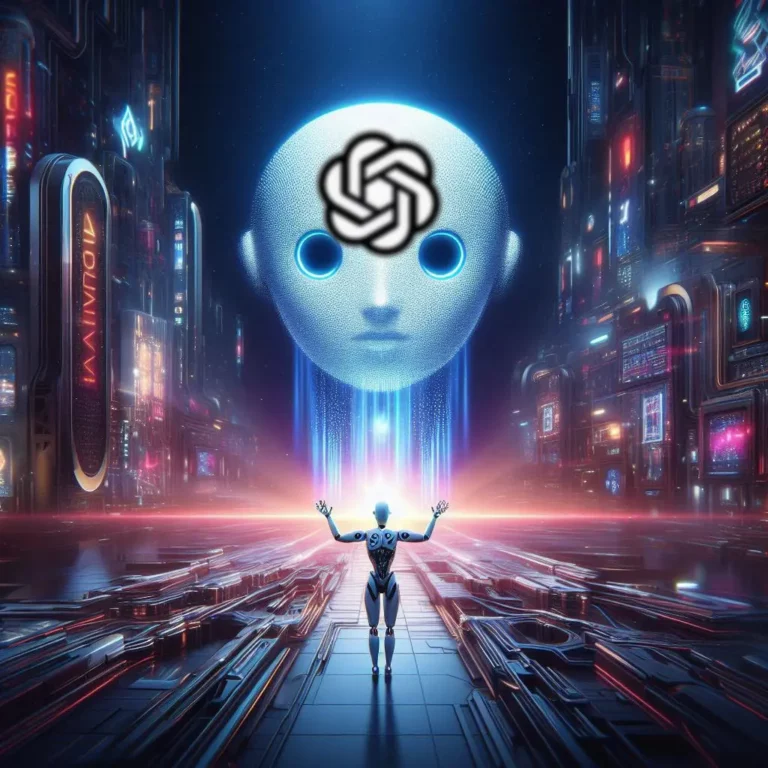Will OpenAI face the same fate as internet giants like AOL, Yahoo, and Myspace?
The future of OpenAI, a leading artificial intelligence research company, is shrouded in a cloud of uncertainty. This powerhouse, at the forefront of a revolutionary field, faces the daunting task of avoiding the fate of internet giants like AOL, Yahoo, and Myspace. These once-dominant companies fell from grace despite their lofty positions, raising a crucial question: will OpenAI suffer a similar decline, or can it chart a different course?
This looming question hinges on OpenAI’s ability to navigate the unique challenges and opportunities presented by the ever-evolving landscape of AI. To fully understand these complexities, we need to delve deeper into OpenAI’s potential vulnerability, its financial standing, and the broader context of the AI industry.
OpenAI’s Vulnerability and Financial Standing
Unlike traditional companies that leverage patents to shield their innovations, OpenAI’s groundbreaking research often exists outside the realm of patentable inventions. This lack of traditional protection exposes them to the threat of rapid replication by competitors. Furthermore, OpenAI’s valuation, although substantial at $86 billion, falls short of the staggering heights reached by companies like AOL during their peak. This disparity raises questions about OpenAI’s long-term financial sustainability.
OpenAI’s groundbreaking research often exists outside the realm of patentable inventions. This lack of traditional protection exposes them to the threat of rapid replication by competitors
However, it’s important to consider the counter-argument. The field of AI is a dynamic one, characterized by rapid advancements. These breakneck leaps in innovation may render patents less relevant in the long run. OpenAI’s inherent adaptability and focus on fundamental research position them well to navigate these constant shifts.
The Role of Ethics in AI Development
Another key differentiator is OpenAI’s dedication to responsible AI development. This commitment sets them apart from other profit-driven competitors. By prioritizing safety and ethical considerations, OpenAI could attract valuable partnerships and public trust, which are crucial assets in the highly competitive world of AI.
However, skeptics might argue that this ethical stance could limit OpenAI’s commercial potential. They might point out that companies with less scruples could outpace OpenAI by taking more risks. Yet, it’s worth noting that reckless development could lead to public backlash and regulatory scrutiny, which could harm a company’s reputation and bottom line.
A recent development further complicates the picture – the ousting and subsequent reinstatement of Sam Altman as CEO. While the details remain confidential, speculations point to disagreements regarding the pace of commercialization and the prioritization of ethical considerations. This episode highlights the tension between financial sustainability and responsible development, a challenge that OpenAI will need to navigate carefully.
OpenAI’s future hinges on its ability to strike a balance between these competing forces. They must innovate rapidly to stay ahead of the curve, while also ensuring the responsible development and deployment of their powerful AI technologies.
Ultimately, OpenAI’s future hinges on its ability to strike a delicate balance between rapid innovation and responsible stewardship of its powerful AI technologies. The recent leadership changes underscore the challenges the company faces in maintaining its position at the cutting edge of AI research and development. To succeed, OpenAI must navigate a precarious path – pushing boundaries while ensuring the ethical deployment of their creations, avoiding the missteps that have plagued others in this nascent field.
The Broader Context: Shaping the Future of AI
In the grand scheme, OpenAI’s trajectory holds profound implications for the AI industry and society at large. Though lacking traditional patent protections and burdened with a lofty valuation, OpenAI’s steadfast commitment to groundbreaking research, strategic collaborations, and the responsible development of AI offer a beacon of hope amidst the uncharted waters of this transformative technology.
However, OpenAI’s long-term prosperity hinges on its ability to continually adapt and innovate within the ever-evolving AI landscape. As artificial intelligence reshapes our world, OpenAI’s principled approach could prove pivotal in guiding humanity’s journey through the challenges and opportunities that lie ahead. Their endeavors may well set the precedent for how we collectively harness the staggering potential of AI while mitigating its risks.
Yet, it’s important to remember that the future is inherently unpredictable. Just as the rise of the internet giants was unforeseen, so too could be the trajectory of OpenAI. The company could face unforeseen challenges, or it could seize unexpected opportunities. Only time will tell whether OpenAI will become a lasting titan of the AI industry, or whether it will become a cautionary tale of unfulfilled potential.
The Impact of OpenAI’s Collaborative Approach
OpenAI’s collaborative approach to AI development is another factor that could influence its future. By fostering collaborations with other research institutions and tech companies, OpenAI can leverage external expertise and resources to accelerate its research and development efforts. This collaborative approach could also help OpenAI to build a robust ecosystem around its AI technologies, thereby enhancing its market position and long-term sustainability.
However, critics might argue that such collaborations could dilute OpenAI’s control over its technologies and compromise its strategic interests. They might also point out that collaborations could expose OpenAI to the risk of technology leaks and intellectual property theft. Nevertheless, it’s worth noting that these risks can be mitigated through careful partner selection, robust legal agreements, and stringent security measures.
The Role of Government Regulations in AI Development
Government regulations could also play a significant role in shaping OpenAI’s future. As AI technologies become increasingly pervasive and impactful, governments around the world are likely to introduce new regulations to ensure their safe and ethical use. These regulations could impose additional compliance burdens on AI companies like OpenAI, potentially affecting their operational efficiency and profitability.
On the other hand, government regulations could also create new opportunities for OpenAI. For instance, regulations that promote transparency and accountability in AI development could enhance public trust in AI technologies, thereby boosting their market acceptance. Moreover, regulations that encourage responsible AI development could align well with OpenAI’s ethical stance, giving it a competitive edge over less scrupulous competitors.
Final Thought
In the final analysis, the future of OpenAI is likely to be shaped by a complex interplay of various factors, including its strategic choices, industry dynamics, and external influences. While there are significant challenges ahead, there are also exciting possibilities for OpenAI to influence the course of AI development and make a lasting impact on our world. As we continue to watch OpenAI’s journey, one thing is certain: the company’s success or failure will offer valuable lessons for other players in the AI industry and beyond.




Comments are closed